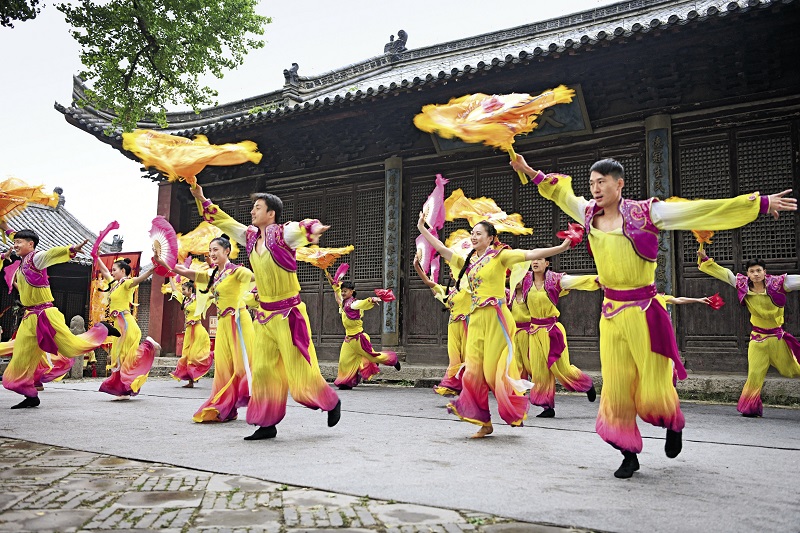
Fengtai Huagudeng: A Folk Dance of China's Han People

Folk artists from Fengtai County, Huainan City, Anhui Province, perform huagudeng at a cultural inheritance activity about traditional Chinese 24 solar terms on October 28, 2020.
Huagudeng, literally translated as a flower drum lantern, is a folk dance of the Han nationality in China. Mainly popular in Fengtai and other counties in east China’s Anhui Province, the art form integrates dancing, singing, and gong and drum beats into a storyline. Among various huagudeng styles, Fengtai Huagudeng is regarded as an important branch, known for the expression of intense emotions and delicate dance movements. It has enjoyed a history of more than 1,000 years.
One main reason for its lasting popularity is that the emotions conveyed by the dance strike a resonating chord with the viewers. During a show, performers and the audience become “playmates,” who come together to enjoy a good time. This also draws the participants closer with each other. The content of the performance is filled with typical elements of the countryside.
Huagudeng is generally performed in winter time when the autumn harvest is finished and the spring ploughing has not begun. Villagers gather in a square to dance and celebrate the harvest. The performance contains four parts: dancing, singing, mini-plays, and gong and drum playing. Among these parts, dancing takes a central role, which includes group dancing and duo or trio dancing. Group dancing focuses on expressing emotions. Duo or trio dancing is usually about romance between young people. It can be prepared or impromptu. The mini-plays are something like miniature musicals.
Huagudeng has developed more than 400 traditional expressions and over 50 basic dance movements. During the performance, interactions between the actors and actresses are particularly emphasized. The male role is called gujiazi, or drum stand, and the female role is called lanhua, or orchid.
The typical dance movement for the female performer presents the beauty of feminine curvy lines. To the end, the performer moves her feet up and down, and shakes the shoulders back and forth while waving dancing fans or handkerchiefs. The presenting of curvy bodies is a common feature of Oriental dances and is fully reflected in the huagudeng choreography. The male performer showcases strength by lifting other performers or making a human pyramid among others.
Fengtai Huagudeng originated in the Song (960-1279) and Yuan (1271-1368) dynasties, took shape in the middle of the Qing Dynasty (1644-1911), and was further developed in the late Qing Dynasty and the early days of the Republic of China (1912-1949). The art form is a critical component in the history of Chinese folk singing and dancing art. In 2006, it was included in the first list of China’s intangible cultural heritage.
Fengtai Huagudeng has been well developed and preserved for two main reasons. First, it has been a part of the culture of a large population since its appearance. Second, after the founding of the People’s Republic of China in 1949, it became popular as a professional local opera and began to be taught in major colleges and universities. Its inheritors have also spared no efforts to protect, perform, and promote the art of huagudeng.
Chen Jingzhi was a master of the art of Fengtai Huagudeng. Performing the female role under the stage name “A Line,” he was famous for his expression of delicate emotions and beautiful movements. He opened the huagudeng art school in Fengtai to train professional performers. Another inheritor, Deng Hong, is also devoted to promoting the art form. She teaches huagudeng in the countryside, has opened a huagudeng school as well, and leads art troupes to perform around the country. All of this has increased the popularity of this folk art across the country.